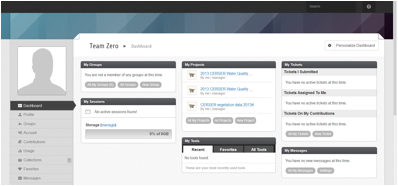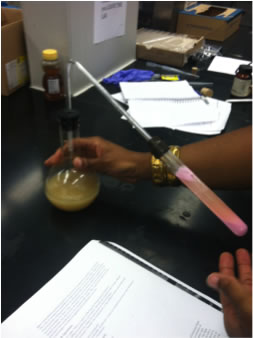 |
 |
| Home | Resume | Professional Statement | Research | Links |
|
Exploration of Mobile Testing Through Automatic Test Case Generation
Keywords: Mobile testing, Test generation, Android Applications, Software testing Mentors: Dr. Renee Bryce, Ryan Michaels Abstract: As technology continues to progress and become a more integral part of everyday life, the need for efficient and reliable testing services likewise continues to grow. This is especially true in mobile testing, where there is both incredible device diversity and a low barrier for entry into the realm of application creation. Most current mobile research has focused on either addressing concern over applications functioning over a wide range of devices, or proof of concept test generation on no more than a handful of applications, and typically cannot be generalized to a wider application pool. This summer we have focused on addressing that second issue, by developing a tool for test case generation of android applications regardless of android version and emulator type. Additionally, the team explored the breadth of the software testing process, from application discovery, test case generation, replaying of test cases against bugged versions of the application, and finally exploring questions of test case analysis, specifically looking at (GUI) element coverage. URL: http://nia.ecsu.edu/ur/1516/summerinterns/15internships.html Documentation of Site Preparation for Installation of SeaSpace Ground Stations at ECSU
Keywords: SeaSpace, TREX, TeraScan, CentOS, Visualization Stations, TeraVault, Monitoring Systems, GOES Mentors: Andrew Brumfield, Michael Osterhouse Abstract: In September 2014, a transition was made to a direct purchase and installation of Seaspace hardware and software. The installation of the Seaspace hardware included: 15 Visualization stations, 2 monitoring systems, a Teravault raw storage device, and a TeraScan Rapid Environmental X-treme (TREX) high-powered processor. The installation of the Seaspace software on the 15 Visualization stations included: an updated version of TeraScan, which includes the Graphical User Interfaces TeraVision and TeraMaster, and CentOs, which is a Linux-based Operating System. Also two 5.0m L band systems were installed on Dixon-Patterson hall in the summer of 2012. The purpose of this project was to document the installation requirements and internal processes at ECSU for Seaspace Hardware and Software Equipment, with also addressing; the location of engineering findings, location of installation requirements, repositioning and securing current ground stations, and proper training center needs. URL: http://nia.ecsu.edu/ur/1415/teams/terascan/Homepage.html Evaluating the Performance of MPI Java in FutureGrid.
Keywords: MPI, HPC, OpenMPI, FastMPJ, Benchmark Mentors: Dr. Geoffrey Fox & Saliya Ekanyanke Abstract: Message Passage Interface (MPI) has been popular in developing tightly coupled parallel applications in the high performance computing (HPC) domain. The majority of such applications are based on either C, C++ or Fortran. The recent advancement in big data, however, has brought attention towards Java. Effort has also been put on Java's support for HPC with flavors of MPI such as OpenMPI Java and FastMPJ. We evaluate these against native C based MPI on a set of standard micro-benchmarks from Ohio State University. The results show a promising future with Java and MPI for HPC applications. URL: https://github.com/cloudmesh/reu/blob/master/doc/source/projects/mpi-java-performance.rst Customizing and Configuring the HUBzero Experience
Keywords: HUBzero, gateway user experience Mentors: Justin Deloatch, Je'aime Powell Abstract:
URL: http://nia.ecsu.edu/ur/1314/teams/hubzero/ The Biosynthesis of Ethanol Keywords: Ethanol, Solution Mentor: Shanta Outlaw Abstract: Ethanol can be found in cleaning solvents, medicines, colognes, and after shave. Ethanol is a benfit of gasoline; it helps lower carbon dioxide, hydrocarbon, and nitrogen emmisions. Ethanol is a clean burning alternative to gasoline. It can be beneficial to the skin because it acts as a cooling agent to the skin. The purpose of this project was to test and and see which mixture would make the most ethanol and which solution would be the purest to actual ethanol. The mixture of fructose, yeast, water and diosodium phosphate produced the most ethanol with 38 milliliters. The mixture of yeast, sucrose, water, and diosoduim phosphate was the purest in comparrison to ethanol. In the future, a common interset will be to find ways to produce ethanol at a faster pace and at a more abundant amount. |
| :: Center of Excellence in Remote Sensing Education and Research | ECSU | 1704 Weeksville Road | Elizabeth City, NC 27909 :: |




